For more than 45 years, the Interrail pass has been whisking travelers around Europe. From Paris to Porto, Lisbon to Latvia, Berlin to Bulgaria, it now covers a vast network of rail lines and connections between the Black Sea, the Baltic, and the Atlantic Ocean. Some links are nifty high-speed whizzers out of the future. Others are rickety 1960s carriages that have probably seen better days. All promise an adventure that’s not just flexible and fun, but also eco-friendly and filled with surprises for those backpacking Europe.
As train travel hits 2020 travel trend lists and the world’s best train rides offer affordable ways to see the globe, we suggest you book this ambitious 41-stop Interrail itinerary now. It blasts through the Low Countries in a medley of frites and old towns. It goes Slavic with pub crawls and Polish dumplings. It throws in a dash of Balkan energy. It touts glinting pebble coves on the Med. It offers French refinement in the Alps, brings Italian romance on bobbing gondolas, and tops off the lot with an infusion of Iberian passion. What’s not to love?
Paris
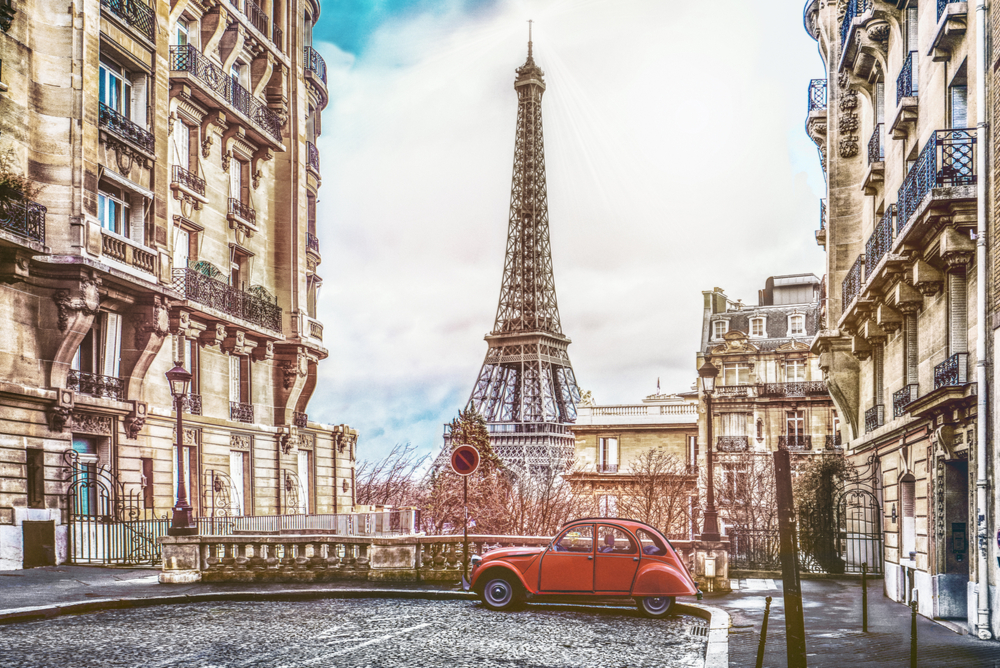
Bonbons and baguettes on the Champs de Mars. Bottles of Bordeaux beside the Eiffel Tower. Slow-roasted coq au vin under the Sacre Coeur. Macaroons munched before the mighty collections of the Louvre. Très chic Parisian boutique hotels. It can only be Paris – a city that fuses culinary prowess with stacks of art, heritage, culture, and romance. Where better to begin your 41-stop Interrail odyssey than the French capital? Here, you’ll step off a train and be greeted with the Mona Lisa, crispy croissants, and the Champs-Elysees (try not to blow the whole travel budget on Gucci!).
Bruges
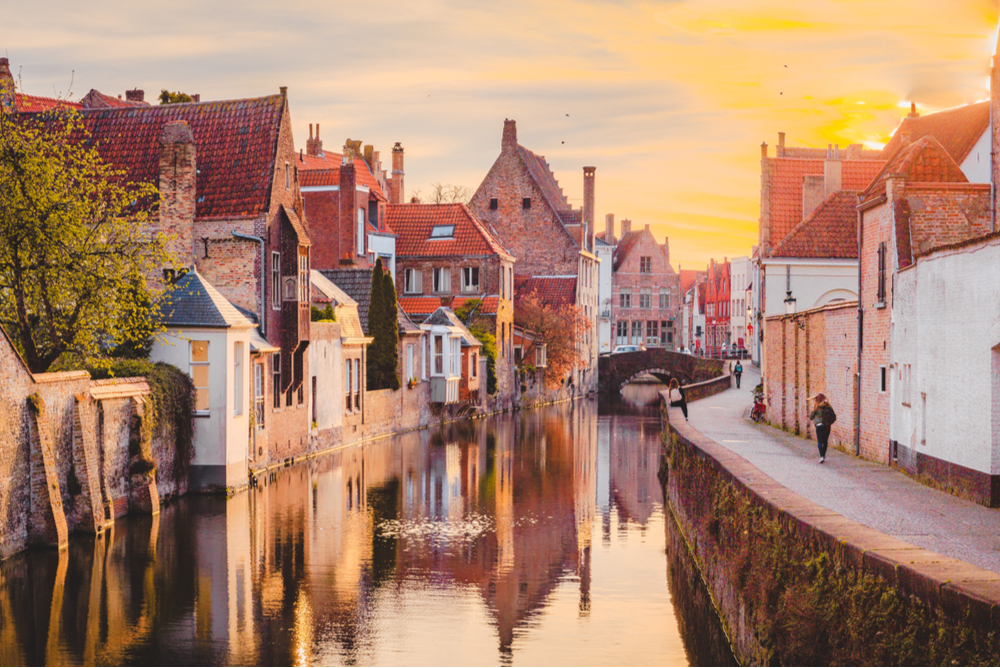
Ever since Colin Farrell and Brendan Gleeson ran amok through the alcoves of Bruges on their failed assassination mission back in 2008, this charming medieval city has been on the map of Interrail travelers. And why not? The word fairytale just doesn’t quite hit the mark for the sea of belfries and cobbled alleys, the drifting canals and winding backstreets that web this town together, and, of course, the best beer Belguim has to offer. Particularly enchanting is the bustling Brugge Markt – 1,000 years old and still going strong – and the Basilica of the Holy Blood – said to host a cloth speckled with the blood of Christ!
Brussels
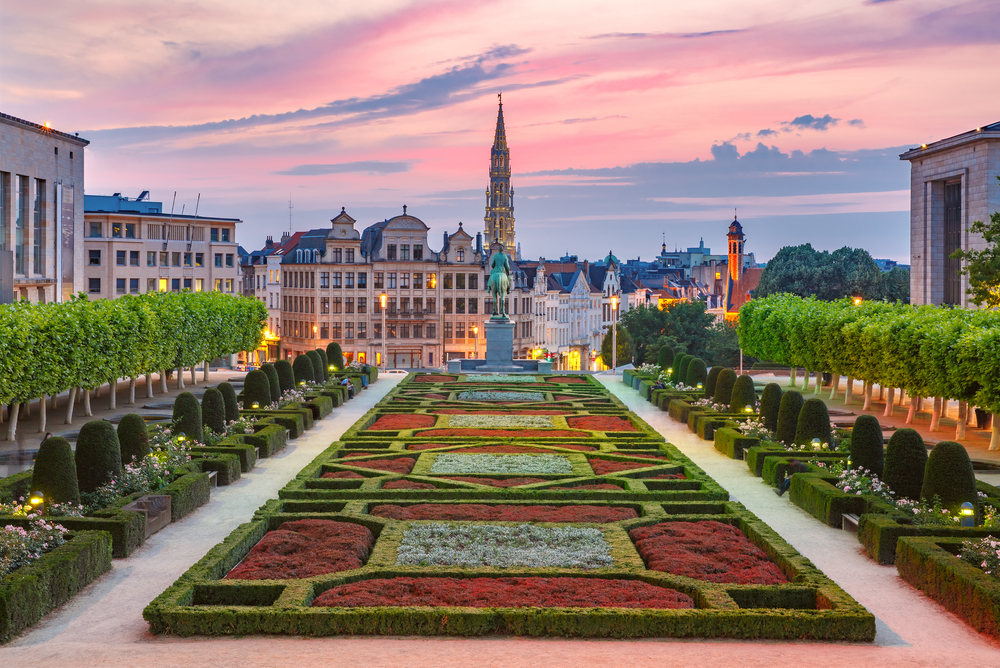
In a taste-bud-tingling flurry of beer and waffles and double-cooked Belgian frites, this grand capital greets all who hop off the train with something filling. And we’re not just talking in terms of calories, either. There’s also plenty to sate the culture craving, what with the UNESCO-attested square of the Grand Place (a mix of Gothic guild houses and Baroque palaces) and the futuristic Atomium from the 1958 World Expo. Oh, and because this is a European trip, you might also want to set aside some time to visit the vast complex of EU parliament buildings.
Antwerp
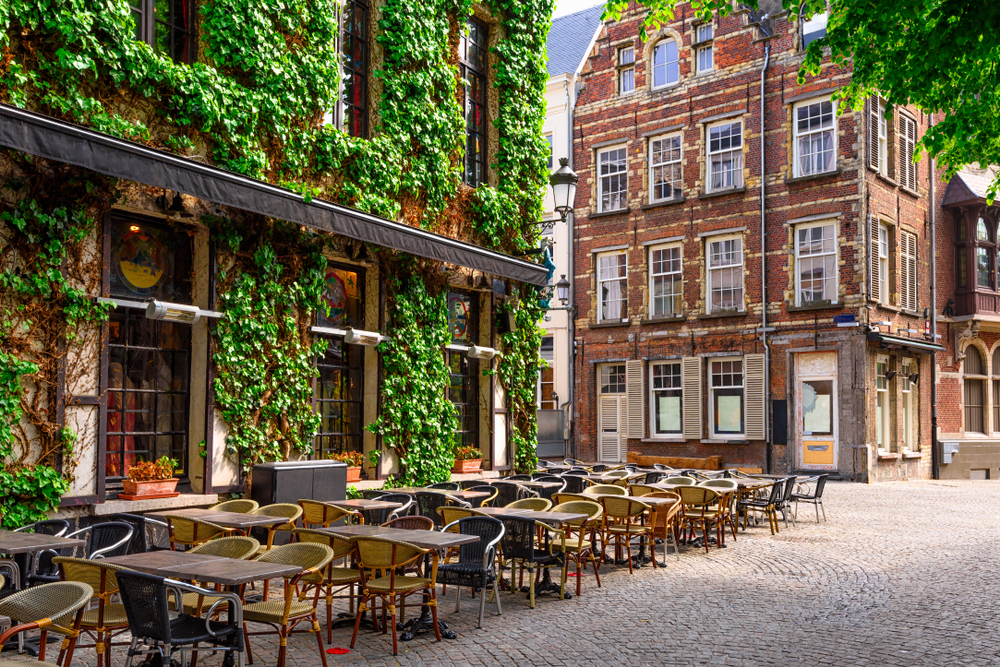
If Brussels is where the business happens, Antwerp is where the party happens. Yep, fanning out from a kitschy Market Square of Baroque buildings and cobbles, this buzzing city is fashion mad and pumping. In the erstwhile industrial depots of Het Eilandje you can find noir espresso makers and loft restaurants. In the Red Light District are EDM clubs like legendary Café d’Anvers next to seedy “massage” parlors. Meanwhile, off-beat Sint-Andries comes replete with vintage threads and hipster beer dives.
Amsterdam
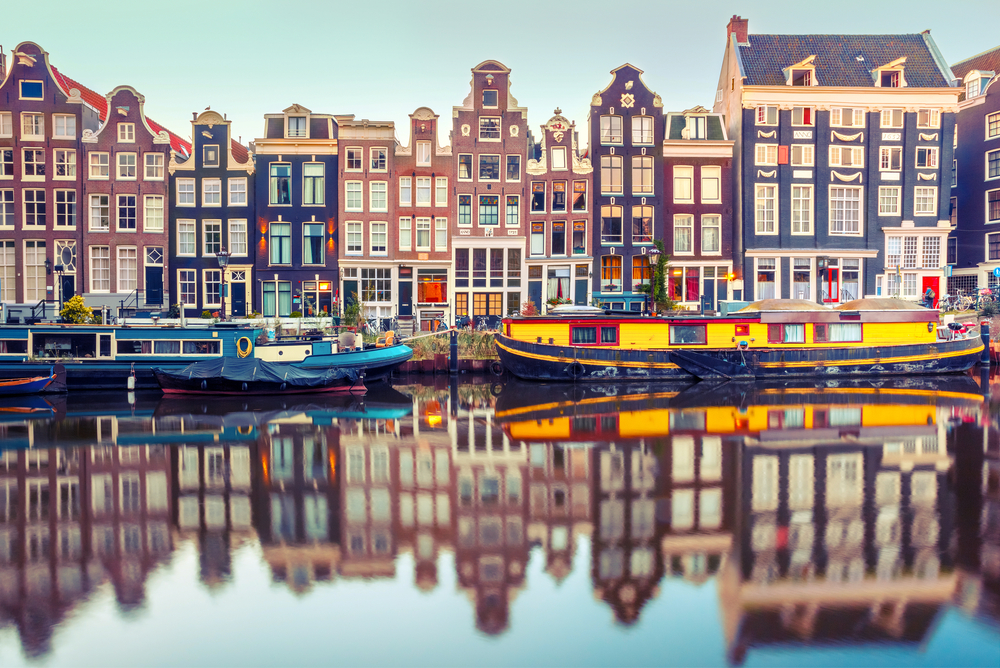
Ringed by canals, filled with raging clubs, and hazed in pink-tinged neon, Amsterdam is up there with the most chilled and fun-loving capitals in Europe. The moment you step off the Interrail in Centraal, you’ll be surrounded by the exhibits of the Amsterdam Sex Museum and sellers of mayo-topped chips. Close to that is the (in)famous Red Light District, opening onto lovely canals with peeping-Tom windows and smoky Amsterdam “coffee shops” (clue: single origin in those might mean something different!). For a touch more refined travel, hop across to Noord for visions of green parks and quaint Dutch windmills.
Berlin
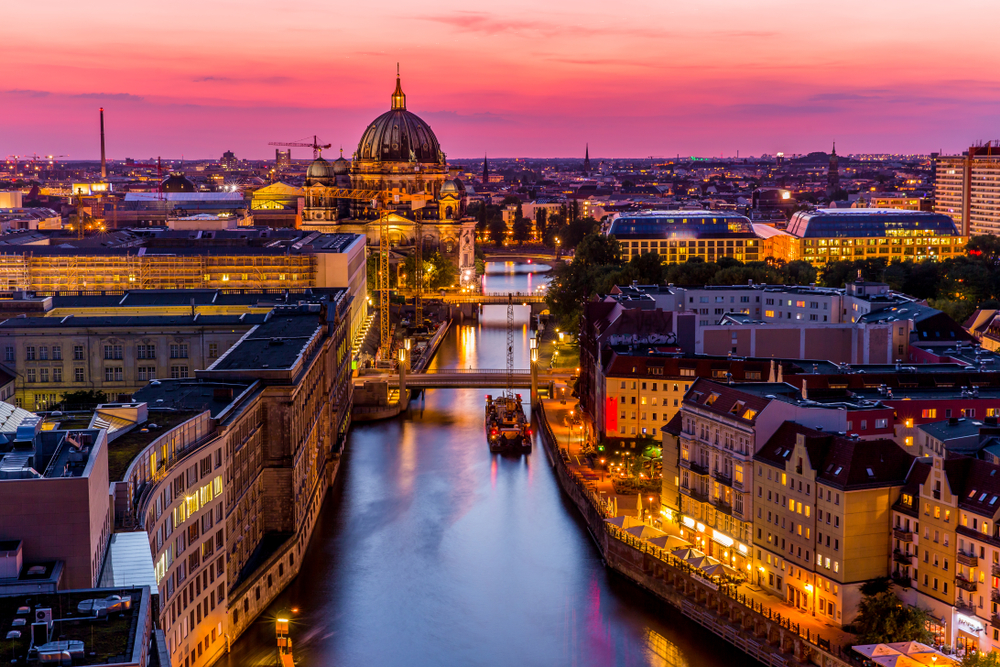
No ultimate Interrail itinerary could possibly be complete without at least a pitstop in the bucket-list capital of Germany. A meeting point of east and west – quite literally, if you see the remnants of the Berlin Wall in Mitte and Checkpoint Charlie – it’s a metropolis that’s steeped in history and excitement. Backpackers often coalesce in the hostels of Friedrichshain. That’s classic Berlin, with ethnic eats, graffiti-scrawled jazz bars, and vinyl emporiums awaiting around every corner. Nearby Kreuzberg is another jewel, touting flea markets and bratwurst stalls.
Warsaw
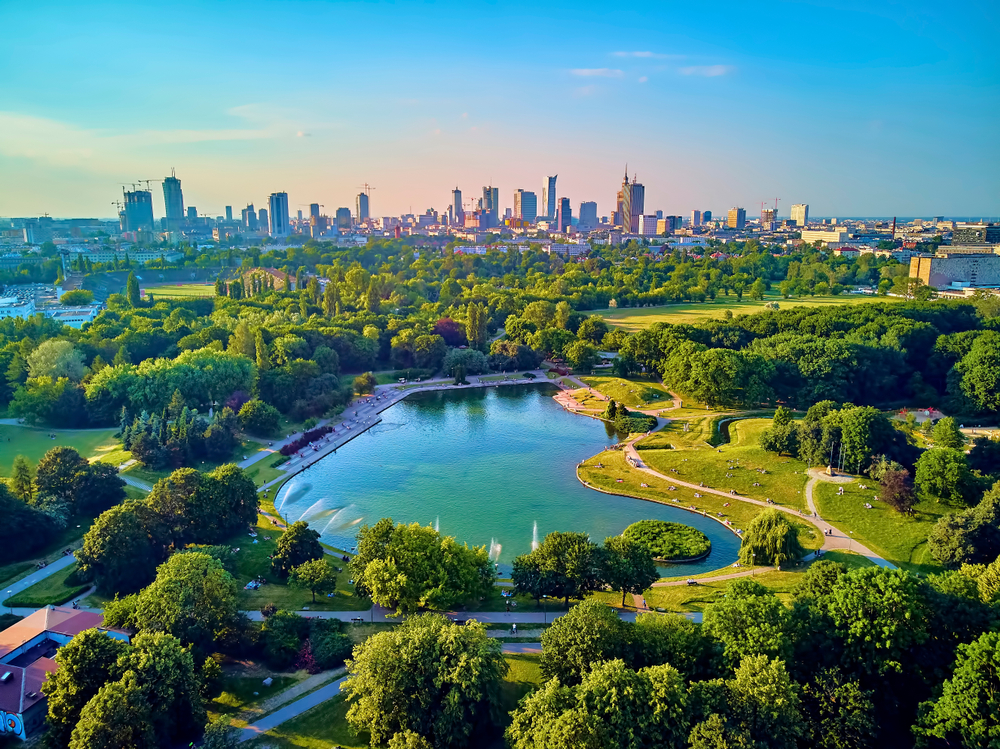
Warsaw will welcome you to Poland with its tram-rattling boulevards, grandiose parklands, Art Deco skyscrapers, and earthy milk bars (traditional Communist-era eateries). It’s an action-packed place to begin your travels through this corner of Central Europe. Areas like the Old Town are the obvious ones to begin at, with glimpses of medieval guilds and churches that were totally rebuilt following WWII. But you’ll also want to stray into districts like Mokotow, which host bohemian cafés in the basements of 1950s tenements.
Krakow
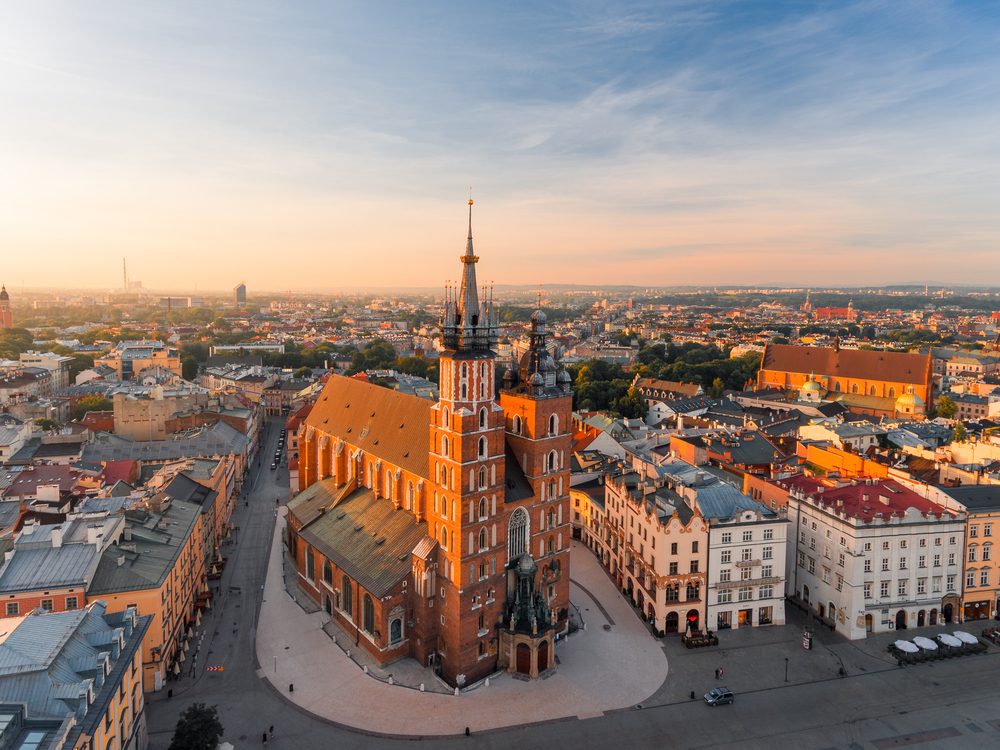
Pack your party shoes – this handsome medieval city is said to have more bars per square meter than any other in Europe. You can either delve into the UNESCO area of the Old Town to find them for yourself, or let the veteran hedonists on the Krawl Through Krakow do the hard work for you. Something more refined comes from the guys at Taste Vodka, a tour that’s a window onto the long, and inebriated, history of the national drink (and one of the best things to do in Krakow). During the day, there are also free walking tours that explore the characterful Jewish Quarter of Kazimierz, where cafés and centuries-old synagogues mingle on the squares.
Zakopane
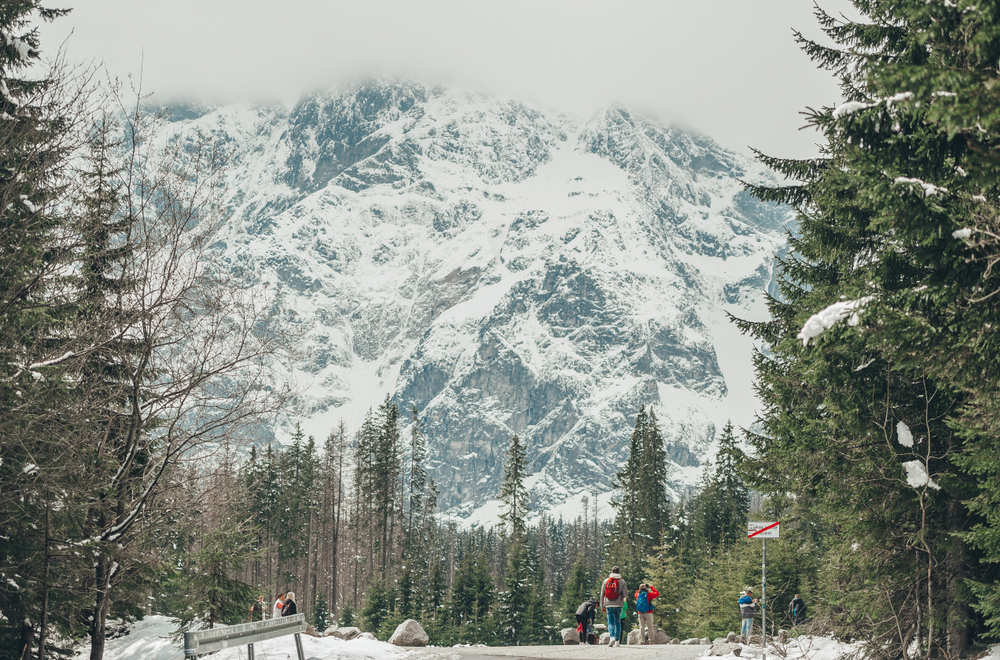
Facing the jagged tops of the High Tatra mountains in the extreme south of Poland, Zakopane is the nation’s winter capital. If you’re Interrailing in the summer months, grab a hiking map and pull on the boots; awesome trails weave around the Valley of the Five Lakes and up to Giewont peak. They offer visions of shimmering waters tucked under goat-speckled summits, and views into Slovakia. If you’re Interrailing in the winter (a Winterrail, a-thank you very much!), this is the hub of skiing in Poland. Rent some gear and check out the pistes of Kasprowy Wierch, where a bowl of black runs drops from 1,987 meters up.
Prague
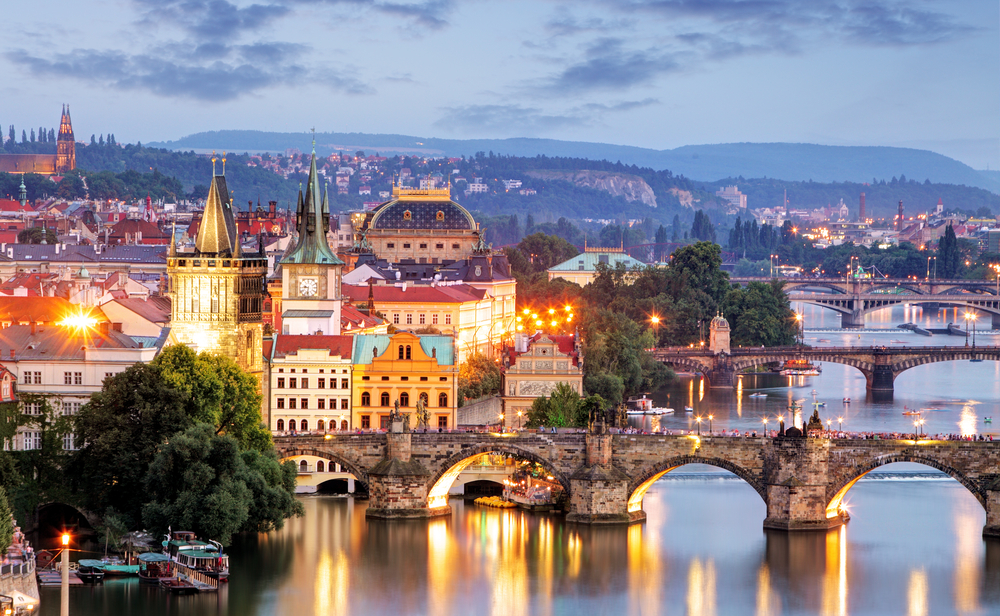
“Prague never lets you go…” so wrote Franz Kafka of his hometown. Hopefully that’s not entirely true, because you’ve got a 7:50 am departure to Budapest to catch in the morning. But for this evening, it’s all frothy Czech beers in underground bars and smoky goulash stews with mashed potato. Before hitting the taverns, you’ll want to see the Old Town area and its snaking lanes. And you’ll want to hop over to Prague Castle. It’s a haunting matrix of Gothic turrets and flying buttresses that loom high on a hillside above the Vltava River. Stop by again in December for festive holiday markets that make Prague one of the best winter European vacation spots.
Budapest
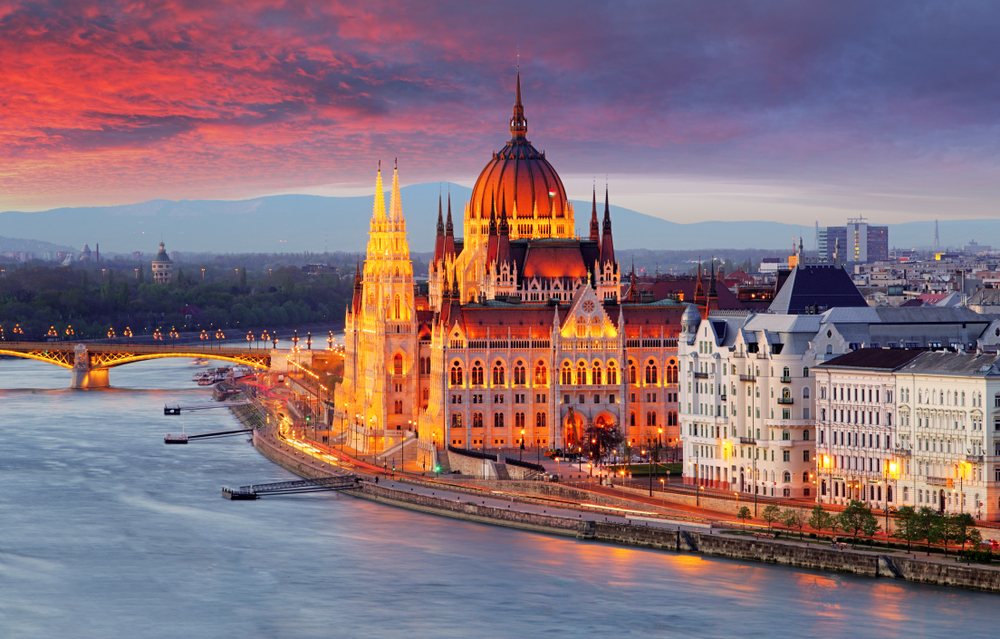
The Interrail lines to Budapest wiggle and weave through the hillsides of Hungary before joining the courses of the Danube. That iconic riverway cuts right across this happening capital, renting it in two and giving perches to the majestic Buda Castle and Fisherman’s Bastion high aloft the water’s edge. Leave the train and make straight for the Jewish Quarter. That’s the backpacker hub of town. It’s a gritty mesh of tenements and café-fringed streets, coming alive after dark with so-called Budapest ruin bars: drinking holes set in disused buildings where the beer costs next to nothing!
Lake Balaton
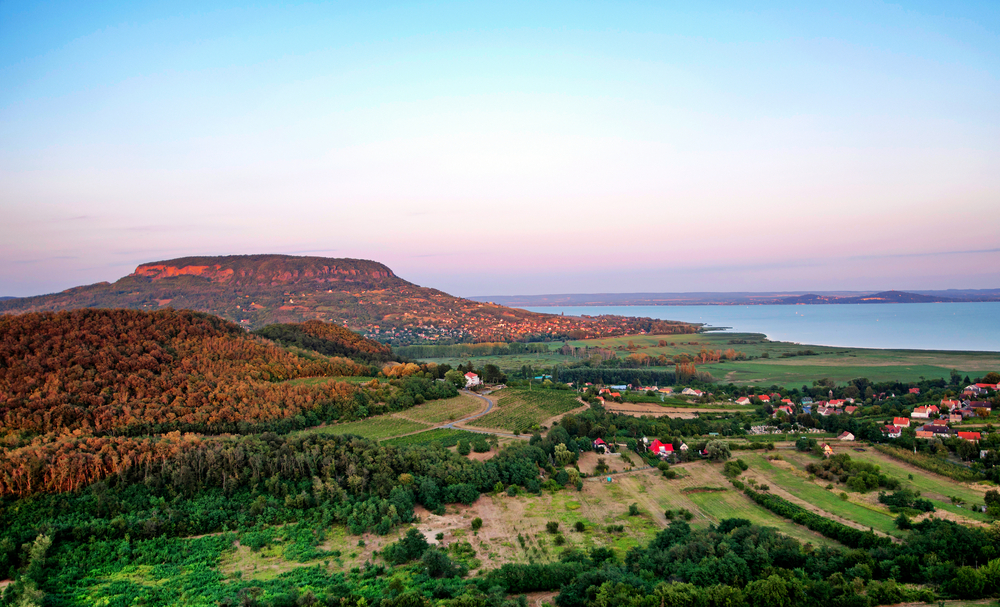
And relax…Lake Balaton is a breath of fresh air in the middle of a rattling rail adventure from city to city. In fact, it’s probably been known for its mineral-rich water and healing baths since Roman times. Come join the emperors in the medicinal H20 of Heviz if you’re really feeling in need of some R&R. Alternatively, the small town of Siofok is home to long stretches of grassy banks where you can lay the towel, splash in the volcanic lake, and soak up some Central European rays – a bottle of local wine in hand, of course!
Novi Sad
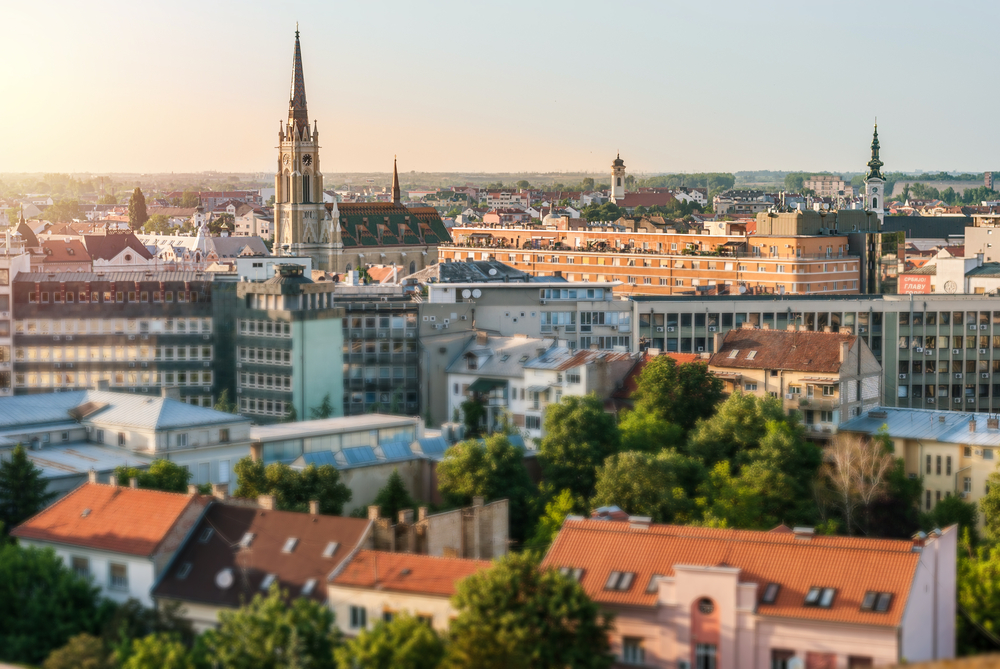
Your first glimpse of Serbia comes with the great fortress of Novi Sad, reclining lazily on the wooded hills above the wide Danube River. It’s the citadel that crowns the capital of Vojvodina province and the second-largest city in the country. That means you’ll find a bustling place that’s packed with students and breakfast bars. Then, it’s up to the cannon-dotted lookouts of Petrovaradin (the fortress) itself. There, you’ll discover clock towers, underground military passages, and perhaps even the wild blowouts of EXIT: a music festival held in the grounds each July.
Belgrade
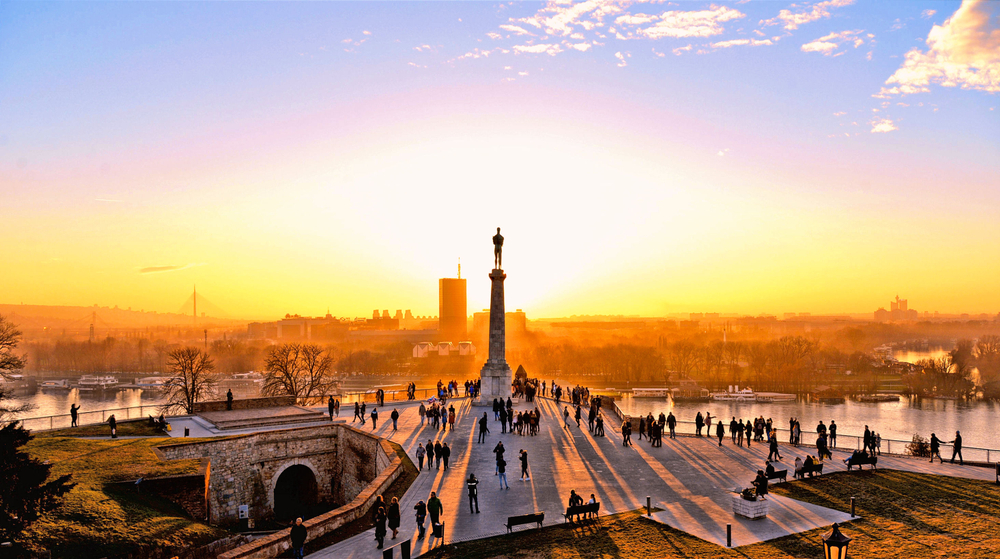
Boundary-breaking Belgrade marks the deepest east you’ll venture into the Balkans on this Interrail circuit. It’s a suitable place for that turning point, what with its grand showing of Orthodox churches and fortified hillsides (plus the world’s best wineries). Start with a glimpse of the double-domed Saint Sava Temple and its holy perch above the town. Then, head down to the Kalemegdan fortress, where the military museums aren’t shy of putting forward their own historical theories (read: propaganda). For the evening, Strahinjica Bana street offers a maze of cafés come beer bars where Serbian food is washed down with potent rakija spirits.
Zagreb
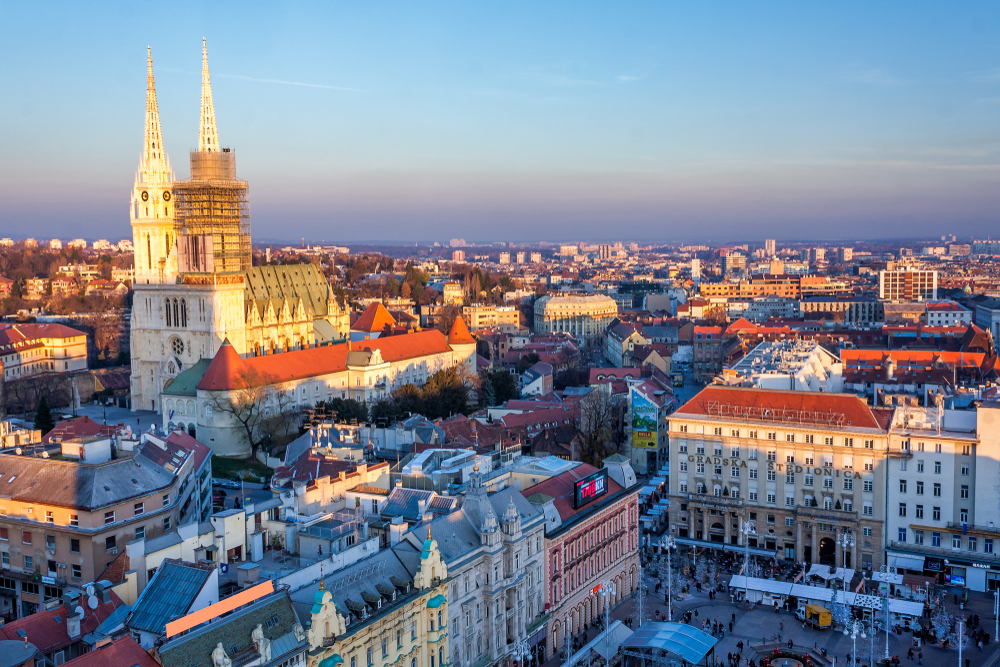
One more border crossing on your ultimate Interrail itinerary means one more capital. The honor here goes to Croatia’s fun-filled main city: Zagreb. Split between a Lower Town and an Upper Town, it’s a living, breathing piece of history. The first area is a bustling mix of boutiques, Neo-Classical squares, and big Balkan museums. The latter district takes you to a sleepier world of cobbled alleys, street-side cafes, and chapel-fringed parks. It’s also where you’ll catch the curious Museum of Broken Relationships, complete with relics of now-defunct partnerships and romances.
Sarajevo
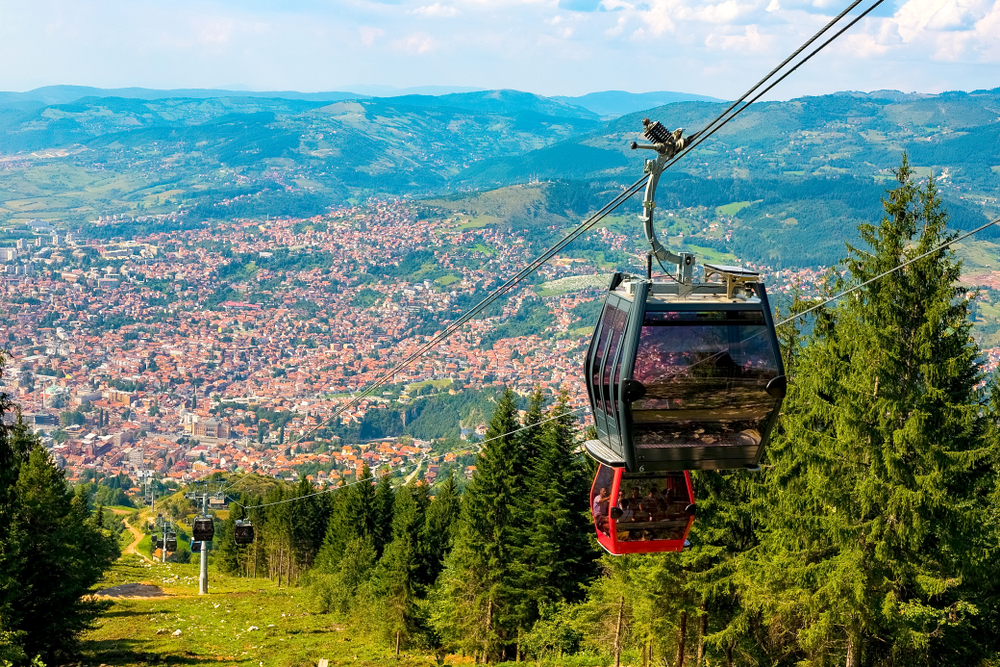
As little as 25 years ago, you wouldn’t have even considered dropping Sarajevo onto an Interrail itinerary. From 1992 to 1996, the capital of Bosnia suffered one of the longest urban sieges in human history, which scarred the center and wreaked havoc on its people. Fast forward to the 21st century and the town is now a hubbub of culture and history. You can still spy out places with bullet holes and memorials. But you can also get lost in an Ottoman bazaar, sip herbal teas in Turkic cafés, and climb forested hillsides for stunning panoramas over the town.
Mostar
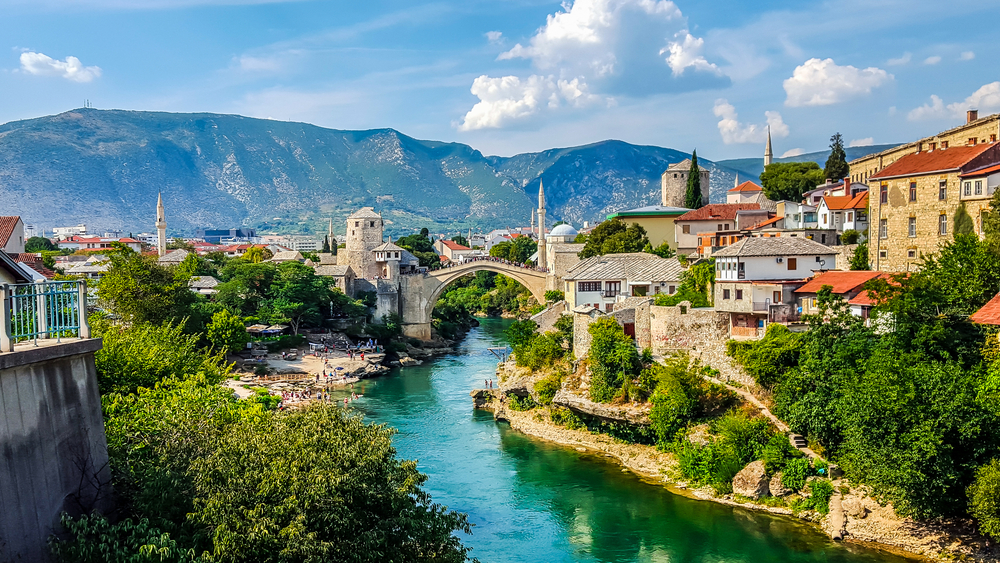
Magical Mostar straddles the Neretva River over a steep-sided gully. It’s anchored on its famous, and namesake, bridge (most = bridge), which is considered by many to be the single most handsome bridge in all of Europe. And just as you’re thinking how ridiculous it is to travel on snaking Interrail lines through the soaring Balkan peaks of Bosnia for a simple bridge, wait until you see this beauty. Built in handsome Ottoman styles from glowing white limestone, it arcs with a peak over turquoise waters between hammams and Orthodox churches. Oh, and keep your eyes peeled for the daredevils who jump from the side!
Dubrovnik
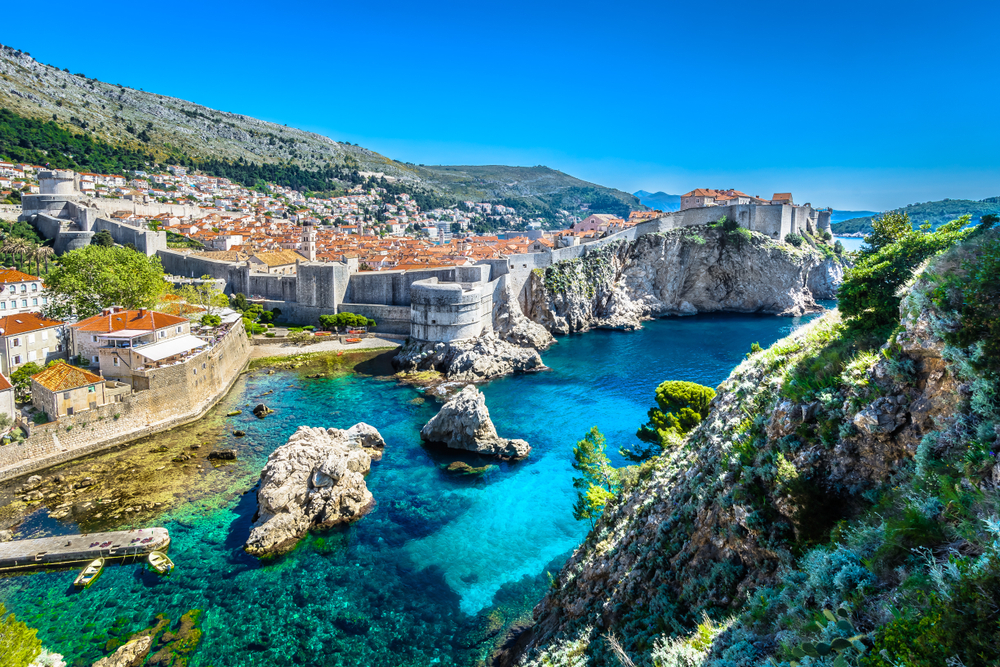
Game of Thrones might have thrust Dubrovnik into the limelight, but this town still oozes charm and authenticity that’s hard to mimic. Jutting into the azure Adriatic Sea, it’s surrounded by high fortification walls and turrets topped with trademark Mediterranean red tile. Inside those bulwarks is an old area of babbling Baroque fountains and marble-faced churches. For beaches, you can hit the Lapad Peninsula. For post-beach beers, you can strut between the bars on Stradun, the main drag.
Pula
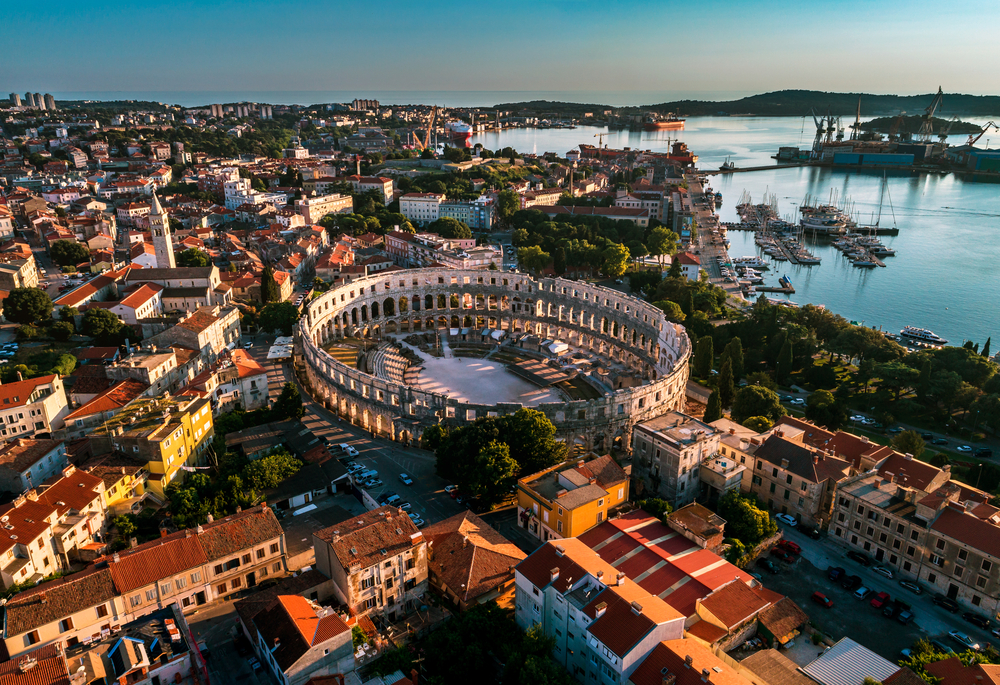
Pula is off-the-beaten-track Croatia: a vacay spot that’s known to Croatian locals more than package holidaymakers. There are stacks and stacks to see, though. From the eye-watering Roman amphitheater to the age-stained ancient temples of the Pula forum, you won’t be short of 2,000-year-old landmarks. And then there are the hidden coves and pebble beaches of the Verudela Peninsula. A day there is all about soaking up the rays between pockets of stone pines and eucalyptus trees as the crystal-clear Adriatic Sea laps against the rocks.
Venice
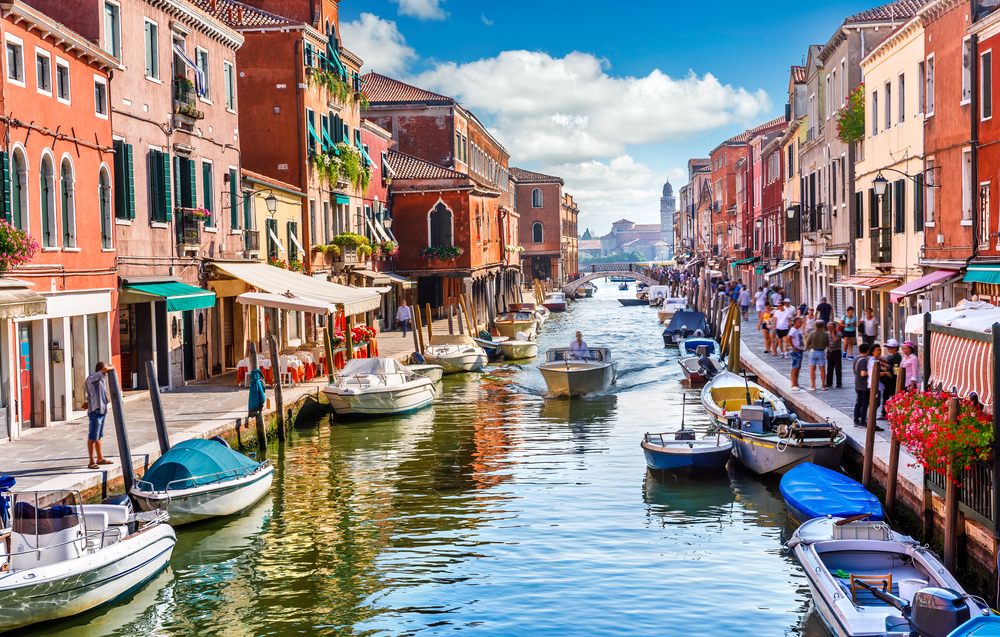
From the carved arcades of the Rialto Bridge to the glass workshops of Murano, the bulbous domes of St. Mark’s Basilica to the rich interiors of the Doge’s Palace, Venice showcases one of the richest displays of architecture in all of Italy. If you’re planning a romantic Interrail proposal, this might just be the place to spring the question. You know, with a gondola ride and a canal-side bottle of Prosecco lined up for afterwards. If not, make for the Campo Santa Margherita to glug beers with the local student crowd
Rome
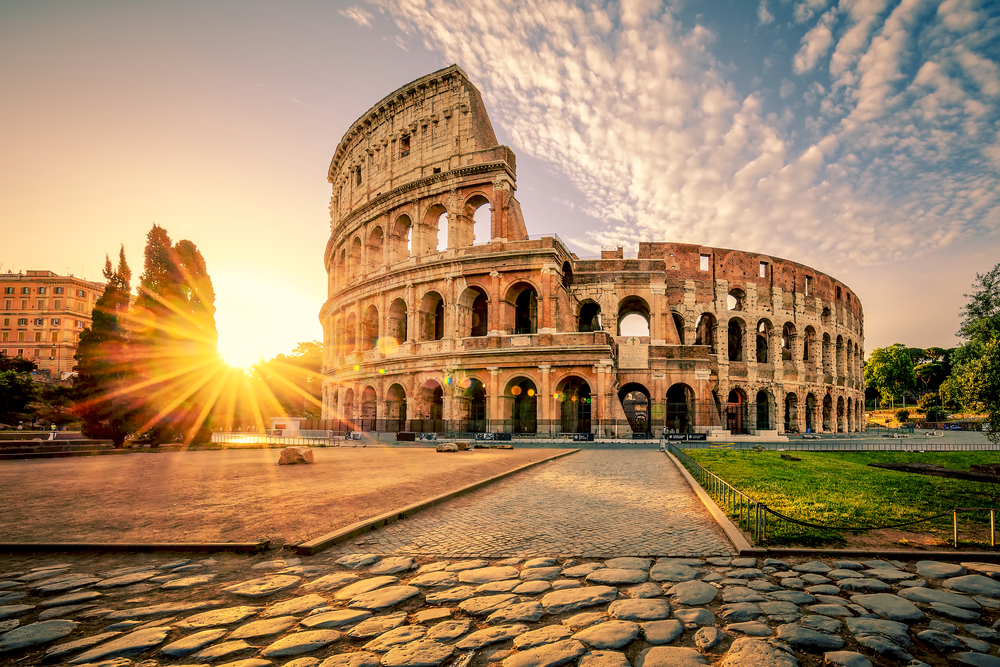
Cross the Rubicon on one of those uber-comfy, uber-fast, high-speed Italian Interrail connections and you’ll trade the city of canals for the Eternal City before you can dust off a calzone. Then, it’s all about channeling your inner Russell Crowe in the Colosseum and touring the Caravaggios and the Raphaels in the vast Vatican Museum. Rome is also a culinary pitstop extraordinaire. The local kitchen heralds deep-fried artichokes, crispy pizza bases (try little Pizzeria Da Remo), and tongue-tingling peperoncino pasta. Perfect for families or short-haul solo trips, Rome cannot be missed.
Florence
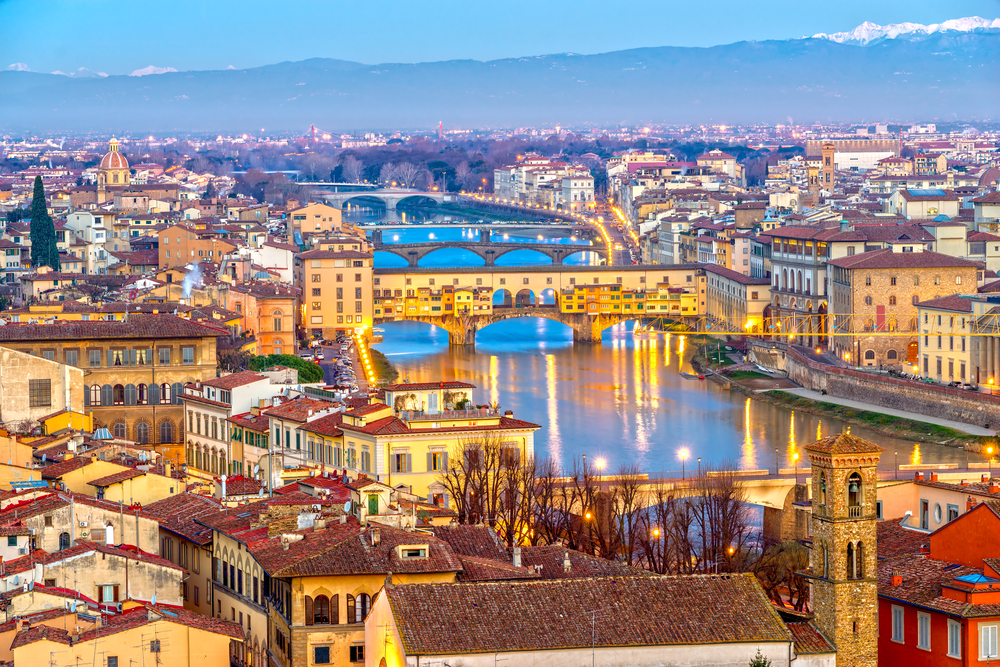
Fantastic Florence unfolds another couple of hours’ ride up the zippy high-speed Interrail lines north of Rome. It’s the proud capital of the Tuscany region, which means the ride in will be all softly rolling hills topped with terracotta castles and rustic vineyards. Then, you’re onto the art. Florence is bursting at the seams with the stuff. The Uffizi Gallery is the obvious starting point, touting many masterpieces from the period of the Italian Renaissance. Then there’s the Galleria dell’Accademia, where the exquisite statue of David by Michelangelo resides.
Lake Garda
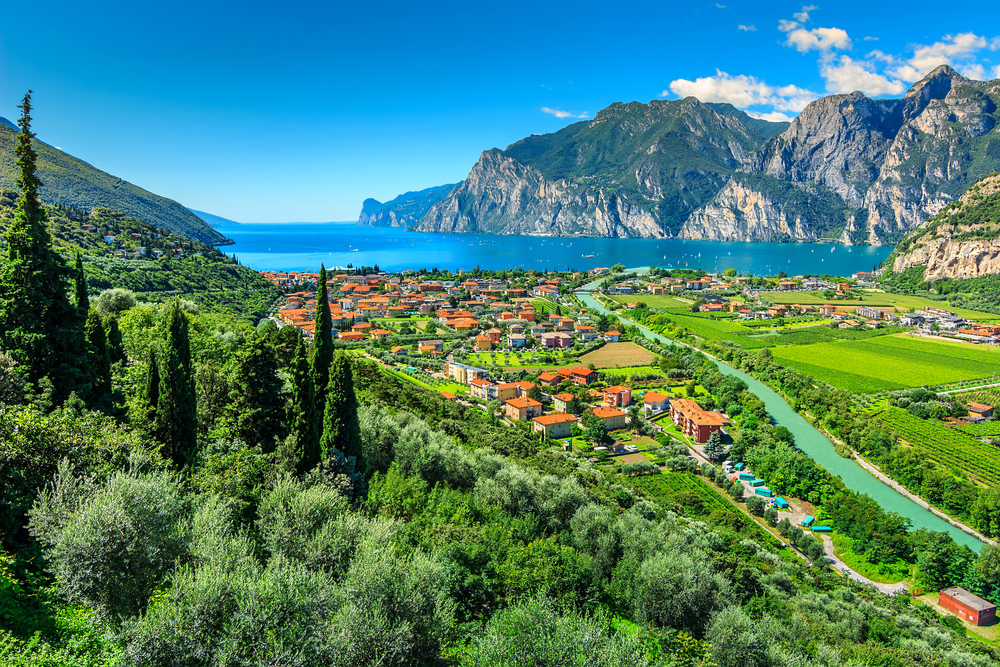
Hop off the Interrail in nearby Rovereto and jump on a local bus going through the Alps to lovely Riva del Garda. Palazzos and piazzas combine on the edge of a glimmering lake there, while glowing limestone summits and scented woodlands of pine flow on all sides. It’s the perfect place to catch a breath, have a dip, and devour more gelato than you should before getting back on the road. If you’ve got extra time, a boat trip down to Limone sul Garda is a must – it’s the home of limoncello!
Innsbruck
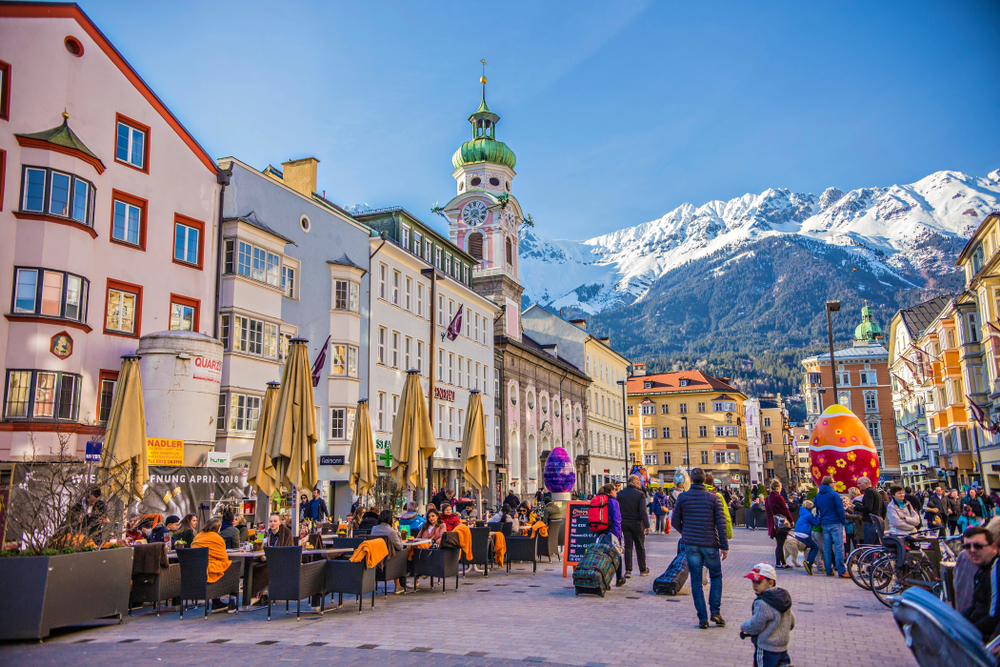
The great capital of the Tyrol is watched over by the craggy Austrian Alps and the ski slopes of the Nordkette massif. That means you can come here by winter to strap on the skis and whiz down black runs with the city unfolding below you. Or, you can drop in after May to hike trails that have lookouts across the Stubai glacier and the quaint wood chalets of Seefeld. In the center itself, Stiegl beers are served with schnitzels under the glimmering Goldenes Dachl (Golden Roof), and remnants of a glorious Habsburg era gild the streets.
Zell am See
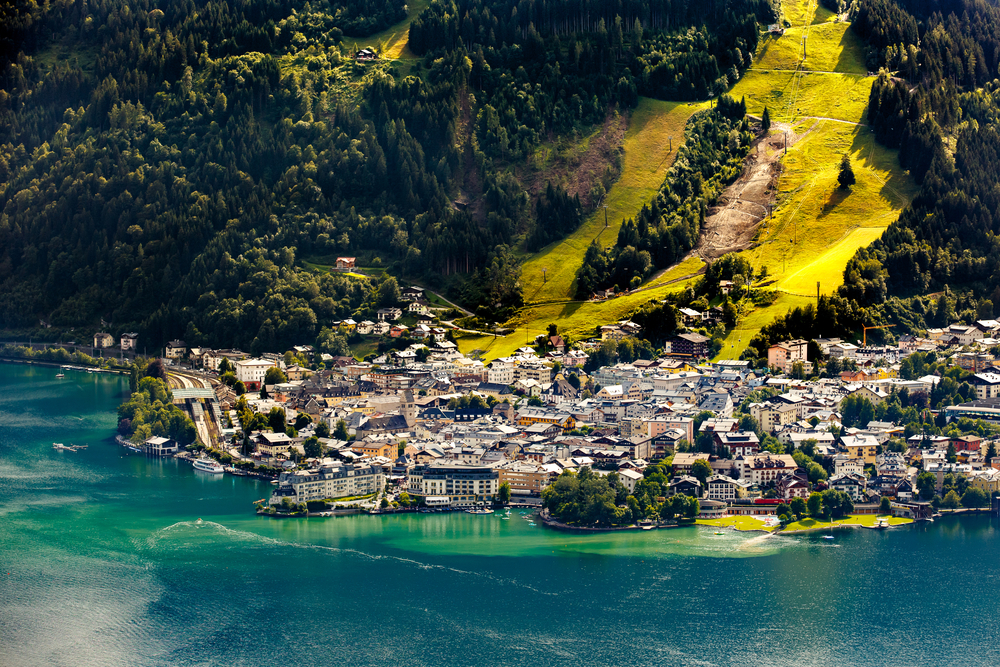
Like a hidden Shangri-La in the midst of the Salzburg Alps, Zell am See spreads under the ice-glinting Kitzsteinhorn glacier with its azure lake and flower-strewn chalet hotels. This is a place to chillax, unwind, and breathe the fresh mountain air. In the warmer months, there’s wild swimming on offer at the local Strandbad, perfect for capping off a day’s hike through green pastures around Schmittenhöhe. For winter, ski runs abound, with Kaprun, Zell am See, and Saalbach Hinterglemm touting a whopping 408 kilometers of marked runs!
Salzburg
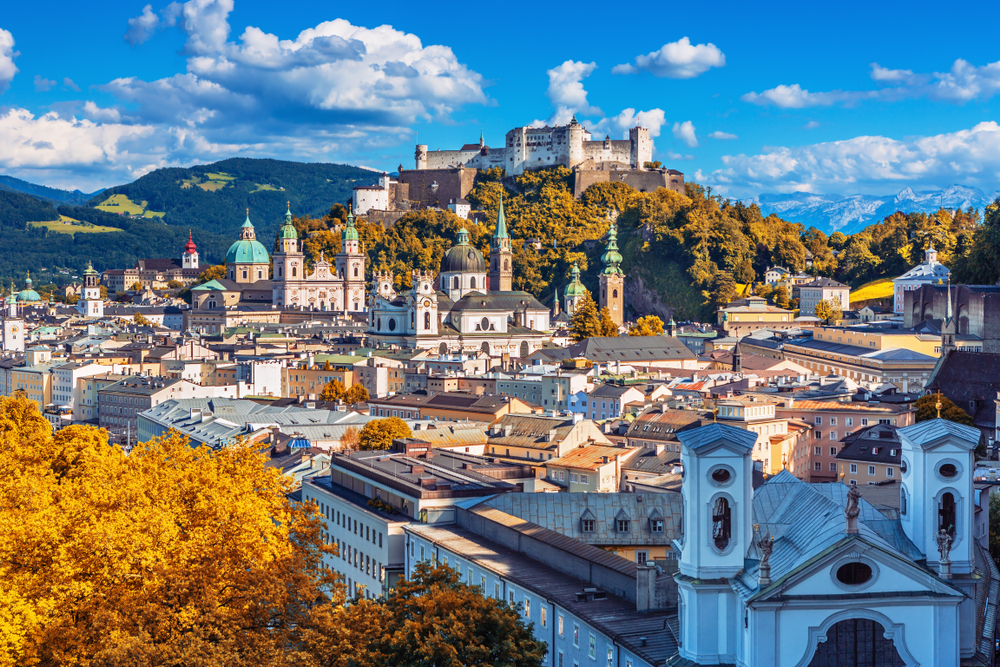
An elegant city built on salt, not literally, of course. But it was the proceeds of the condiment that helped take Salzburg to soaring heights in the 11th century when it became rich on tolls levied on salt barges going up and down the Salzach River. These days, you probably know the town better for The Sound of Music, a Julie Andrews opus that still has whole walking tours dedicated to it. You’ll want to be sure to stop singing to fit in trips to the formidable Hohensalzburg fort, and explore the fairy-tale old town with its cobbled lanes and Mozart-themed cafés. Have a full day? Take the hour bus ride to Salzkammergut to see Fuschlsee: Austria’s hidden gem.
Vienna
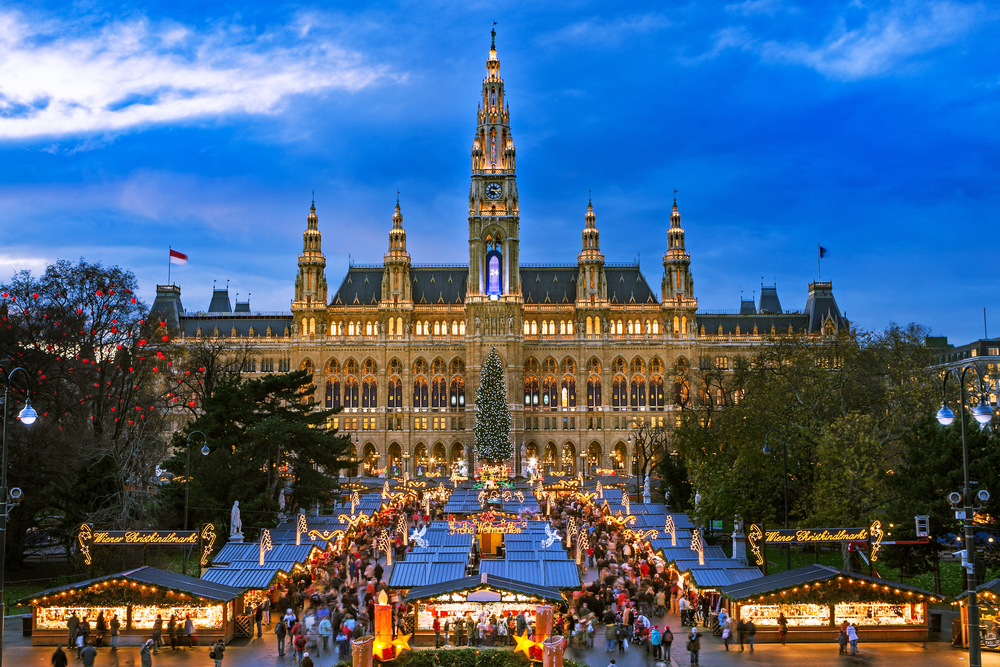
Vienna’s awe-inspiring Hapsburg palaces greet Interrail travelers fresh from the Alps. They rise in a patchwork of Neo-Classical wings and mighty frontispieces carved with Baroque filigrees and frills. You’ll never be shy on places to snap travel shots! But beneath the surface is another Vienna. That’s a shadowy town of vaulted coffee houses where Trotsky once chatted with Sigmund Freud, of smoky beer bars scented with currywurst, and subterranean Roman ruins that date back millennia.
Munich
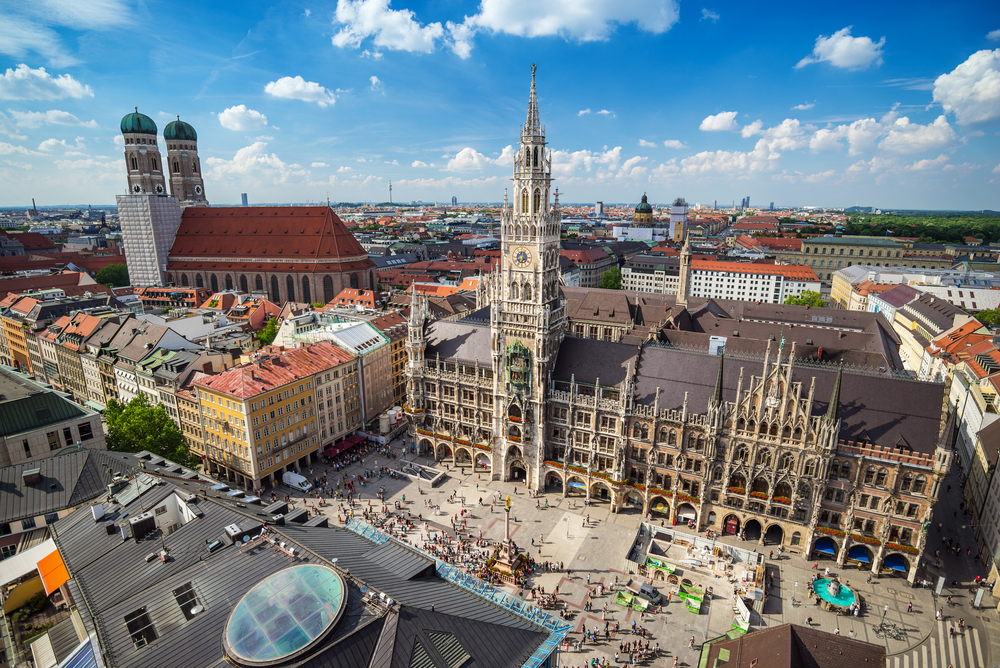
You’ll be glad you packed those lederhosen for Munich, especially if you’re railing by in late September when the annual hops, Oompah, and bratwurst blowout of Oktoberfest is roaring throughout the city. And if you’re not, there are still loads of beer halls for you to stomp on the tables while clinking steins. Munich is also famed for its vast parklands and obscure beach destinations. The English Garden is typically top of the bill. Grab some pretzels and smoked cheese and head there for a picnic if you really want to feel like a local.
Zurich
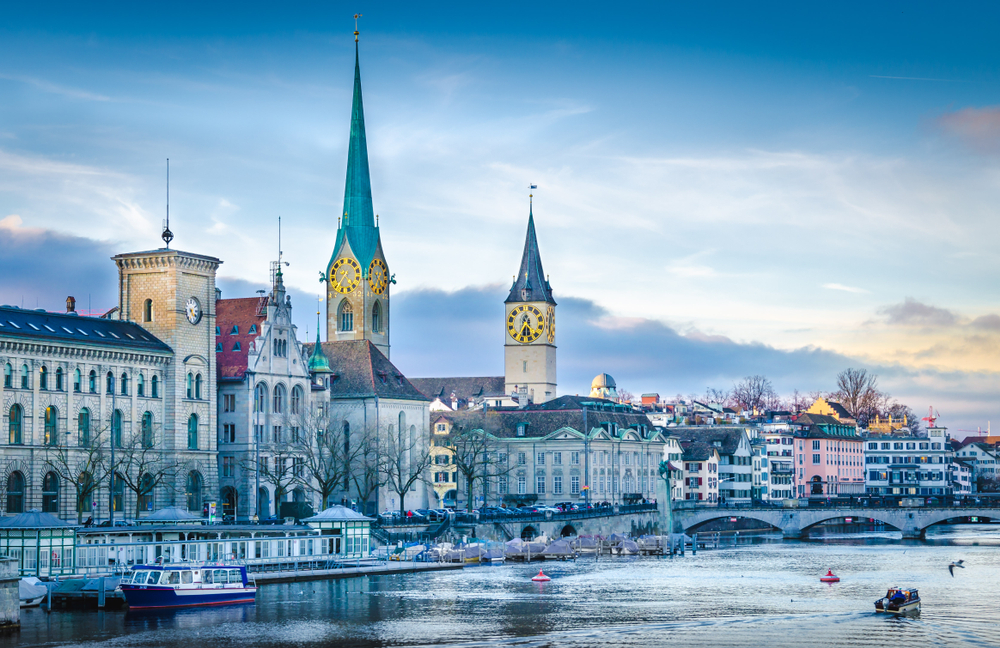
Straight-laced Zurich is your opportunity to ditch the backpack and jeans for the three-piece suit. This banking and business hub is refined and elegant to a T. It spreads along the River Limmat and the banks of big Lake Zurich with a glorious old area where the spires of the Grossmunster loom high overhead. Under that are bistros offering cheesy fondues and raclettes, champagne lunches, and cocktails. If the budget won’t allow for those, consider that this one is also the so-called portal to the Alps. The walking trails and ski slopes of the Glarus range sit just on the other side of the lake.
Zermatt
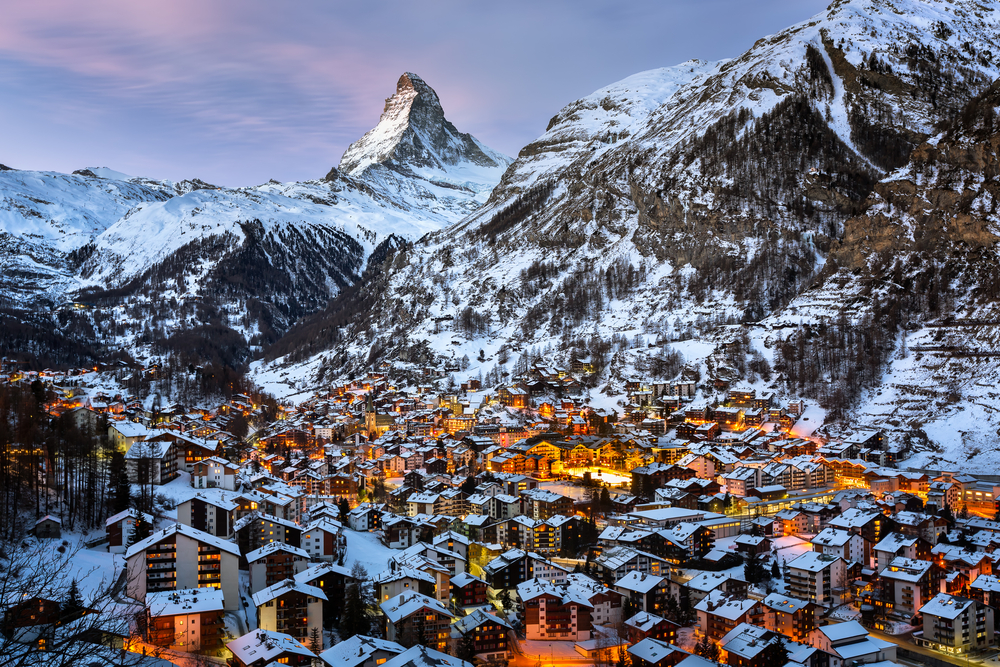
Zermatt is topped by the gnarled outline of the Matterhorn. It’s a peak that’s as perfect as a slice of Toblerone, dusted with snow over the kitschy Alpine chalets and pine-studded pathways of the village below. Totally car free, this serene corner of the mountains is only accessible by shuttle trains. They’re your ride to a bowl of beautiful summits, all best explored on famous trekking routes like the Five Lakes Walk and the Riffelalp Trail. In the evening, return for a sunset schnapps as the light fades behind the Italian border.
Chamonix
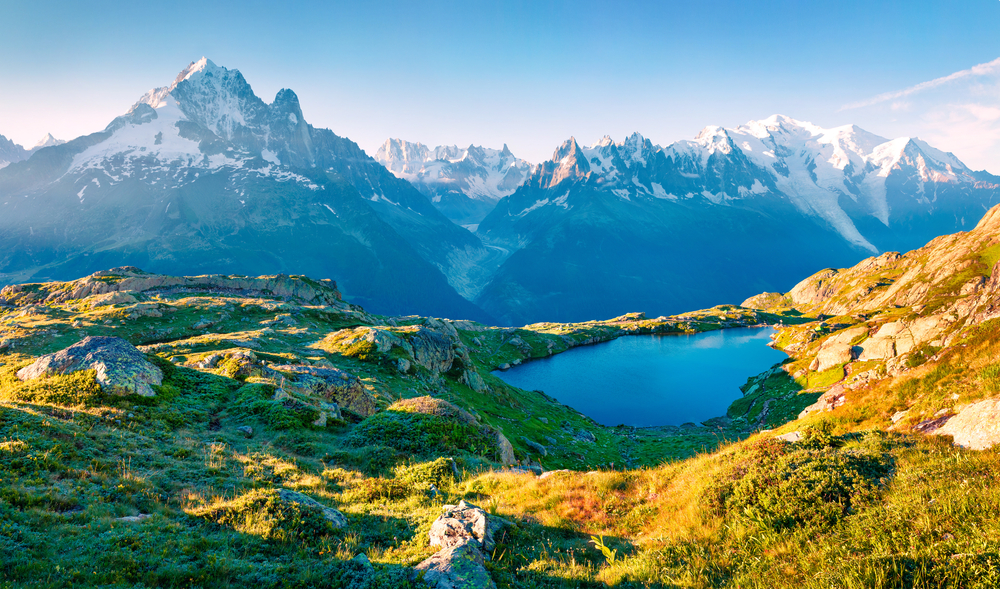
Just a mention of the name Chamonix is usually enough to conjure images of whizzing downhill ski racers and chocolate-ad mountain ranges mantled in snow. Well…that’s precisely what’s on offer in this world-famous resort town deep in the French Alps. Ski fields abound, connected straight to the center by dangling gondolas. During summer, other cable cars can take you to jaw-dropping lookout points on the spire-like peak of Aiguille du Midi. Or, you can sit with a croissant and take in views of the Mont Blanc massif, hulking overhead with cloud-haloed glaciers.
Lyon
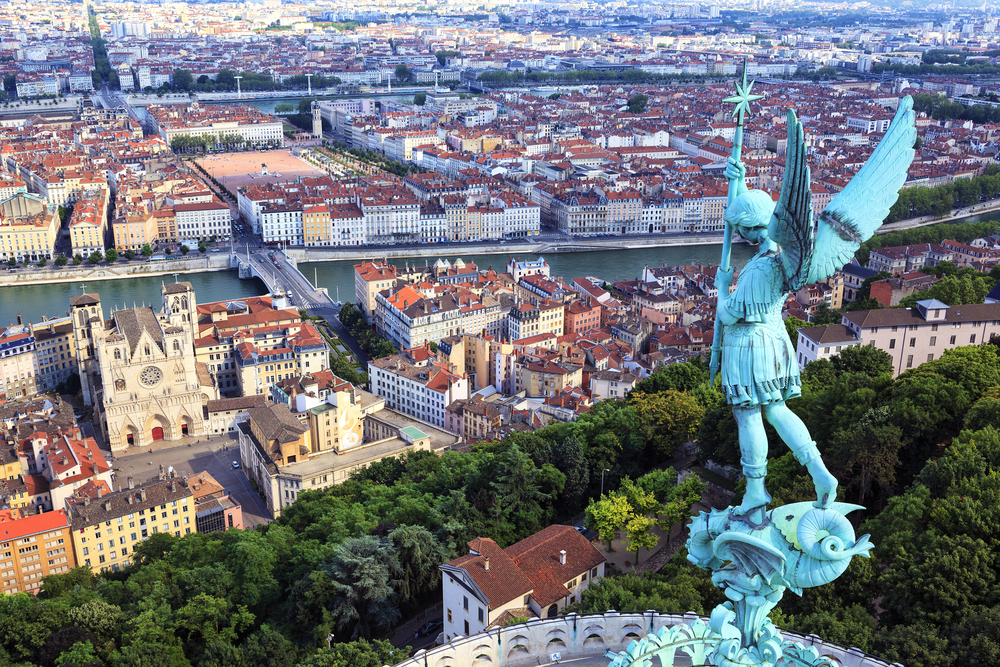
Loveable Lyon marks your return to France with a flurry of rich history and culture. The Basilica of Notre-Dame de Fourviere caps the skyline on the foothills of the Alps. There are the prestigious collections of the Musee Lumiere, dedicated to Lyon’s own bros and the inventors of cinema. Oh, and you can get lost in handsome Vieux Lyon. That’s a whole district of flower-blooming squares, hearty bistros, and narrow Traboules arcades done in Gothic style.
Marseille
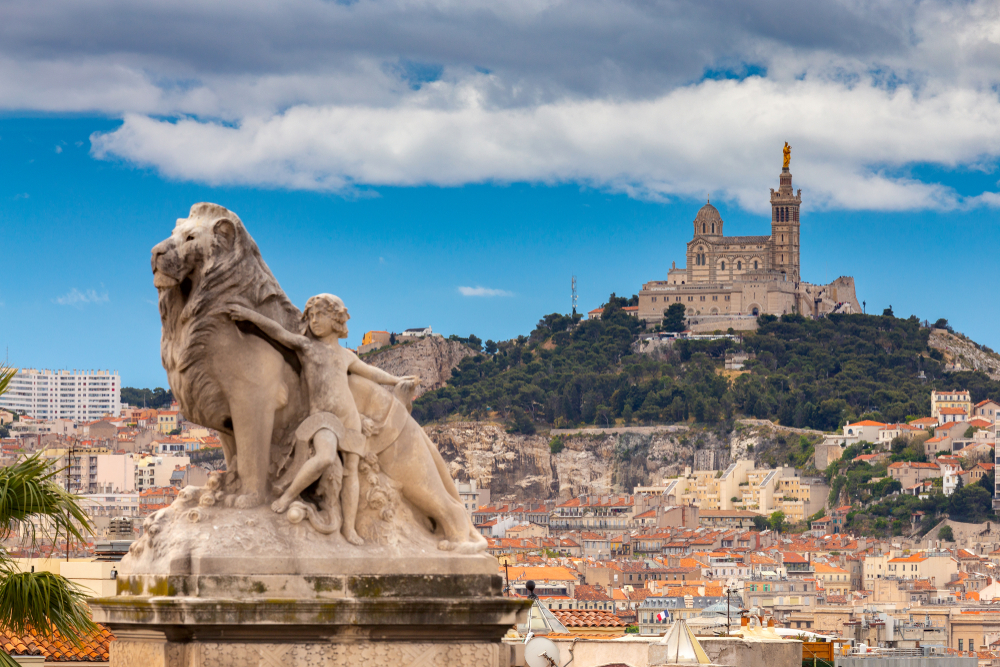
Marseille lies between rugged inlets and lavender fields at the end of the Cote d’Azur. And if that still doesn’t sound romantic enough for you, there’s always the town’s tight-knit maze of an ancient Vieux Port, the workshops and bistros of enchanting Le Panier, and the towering spires of the Notre Dame de la Garde church on the ridges overhead. When the mercury cranks skywards, consider trading your Interrail pass for some deck shoes and charter a boat to the famous Calanques: coastal inlets filled with turquoise Mediterranean water and dashes of pine forest. Have more than a few hours? Take the 70 mile drive to Camargue: France’s wild wetlands.
Barcelona
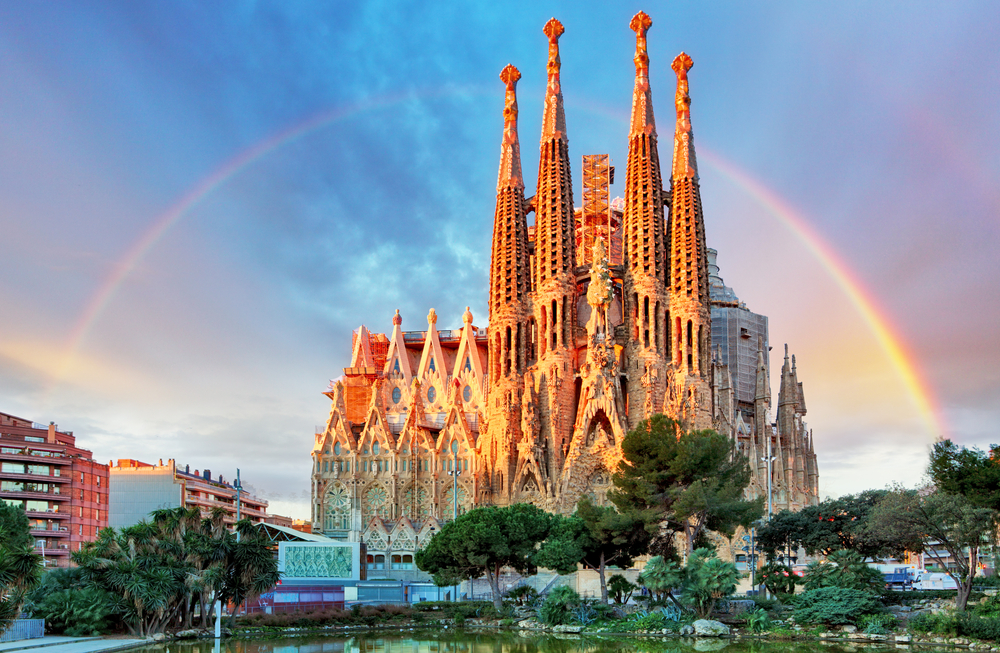
Football-mad, foodie haven Barcelona is the stuff of bucket lists. It unfolds over the Pyrenees in a mix of Art Nouveau blocks and medieval spires, shimmering beaches and world-class museums. Of course, sights like Gaudi’s La Sagrada Familia and the strange statue works of Park Guell should be checked off the moment you get off the train. That leaves time for shopping on Las Ramblas, sangria-sipping, pintxos-eating, and nights of samba dancing and jazz in El Gotico and El Raval.
Valencia
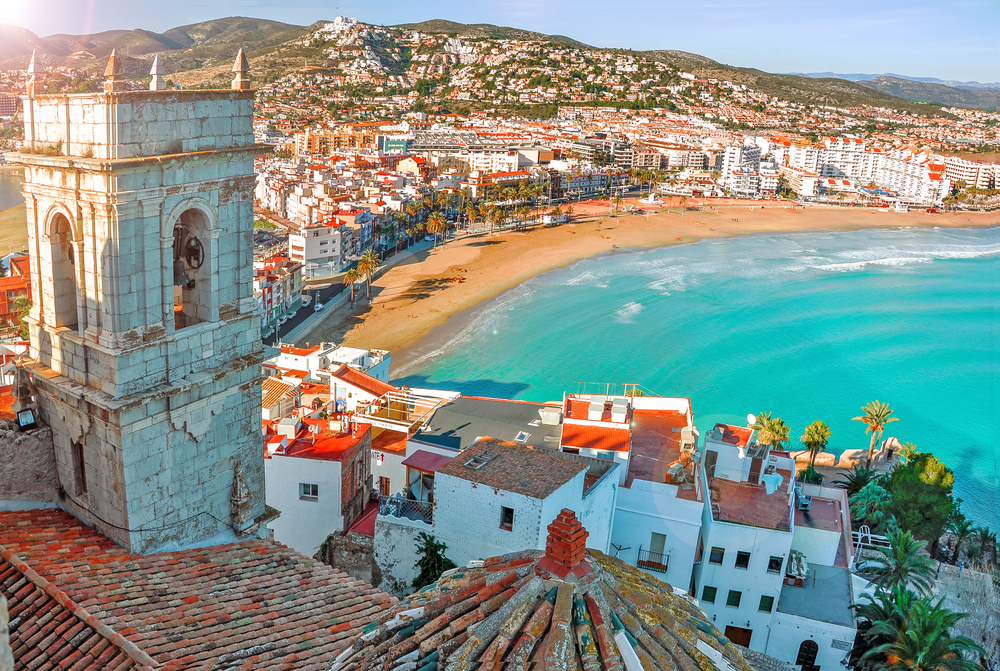
Vibrant to its last swaying palm tree, Valencia is a town that pulls coastal Spain kicking and screaming into the 21st century. Its piece de resistance is the vast complex of the City of Arts and Sciences, packing in an opera house, an IMAX, botanical gardens, you name it. The chic Barri del Carme is home to London-like vintage clothing shops and cool coffee roasters. You can even bike through parks that sit in the spot where a river, now rerouted around the city, once flowed! Don’t forget to try authentic Spanish paella — a dish that originates right here in Valencia.
Madrid
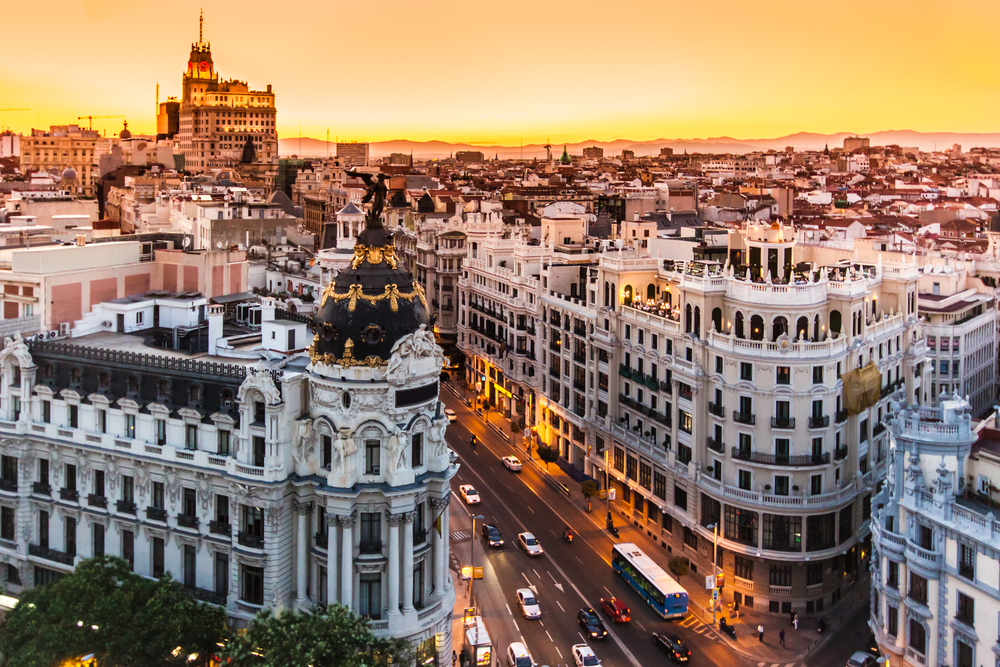
The heart of Spain – both geographically and culturally – sits in Madrid. A city of twirling flamenco dancers and passionate tapas cooks, of great literary ghosts and regal palacios, this one’s certainly not to be ignored on any cross-Iberia Interrail route. Stop by the bustling square of the Puerta del Sol to get your bearings. From there, you should find it (relatively) easy to uncover the hodgepodge of cured hams and Manchego cheeses in the Mercado de San Miguel. And you should be able to navigate to Museum Triangle, which not holds masterworks by El Greco and Velazquez, but is one of the very best things to do in Spain.
Porto
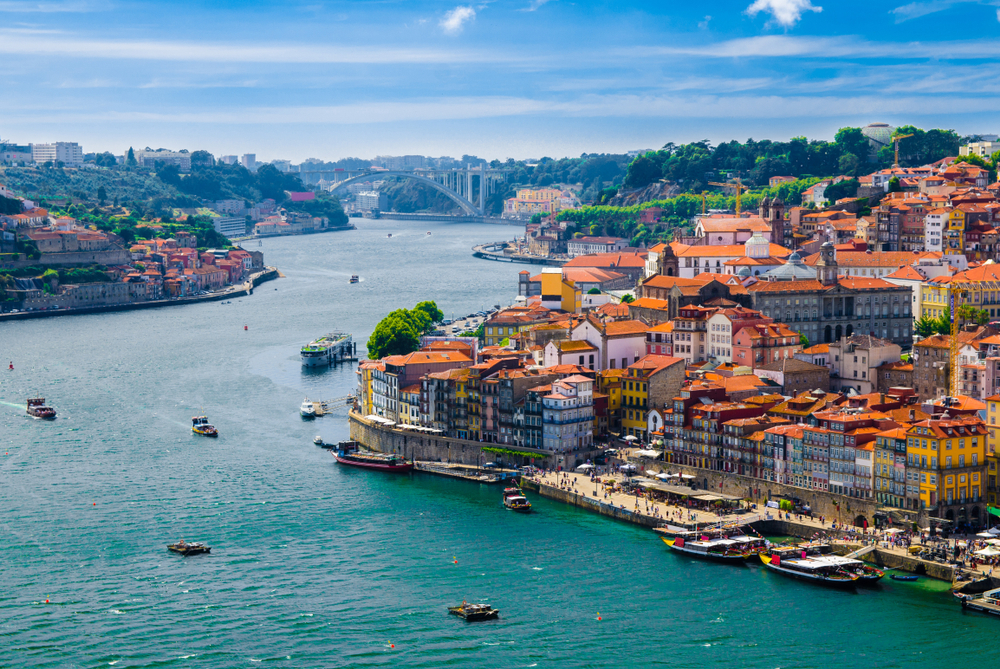
Pretty Porto drops down a valley on the side of the River Douro in northern Portugal. It’s a stunner to behold, with blue-tiled churches sporting Baroque spires over a UNESCO-attested center of wiggling lanes and steep streets spilling with wine bars. The town’s namesake tipple – port – is best tried in the cellars that line the waterside. Don’t have too much, though, because the soaring walkways of the Luis I Bridge certainly don’t suit a light head!
Aveiro
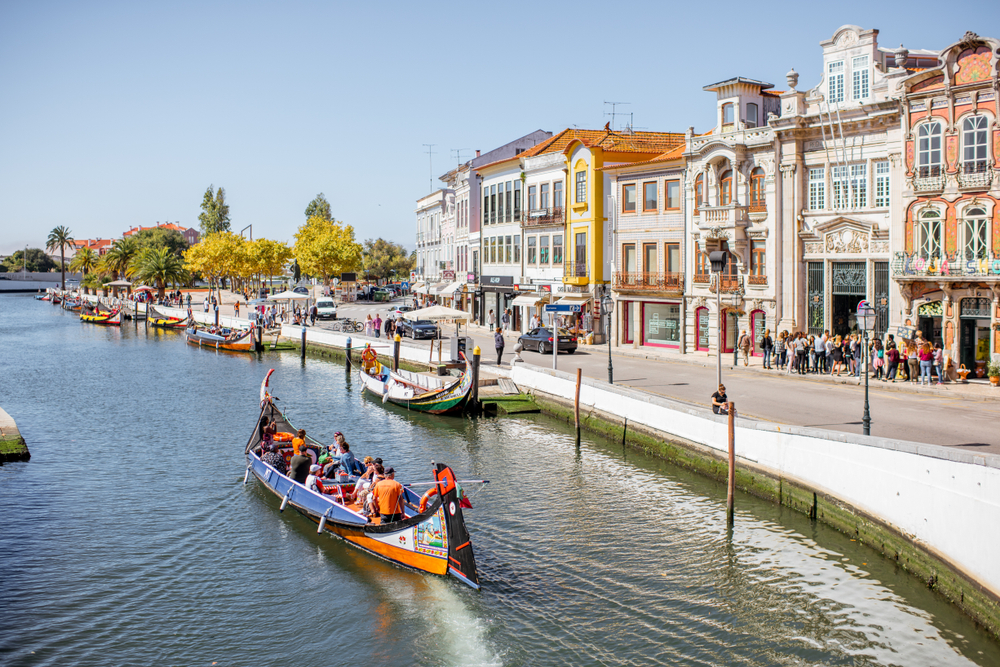
They call Aveiro the Venice of Portugal. It’s spread across a coastal lagoon, is famed for its handsome gondola boats, and is chopped up by little canals, so it’s easy to see why! But there’s something indelibly Portuguese about this town, and you won’t have the booming crowds of its Italian compadre. Head for the Convento de Jesus and its beautifully tiled interiors to learn all about the local saint. Or, navigate the backstreets to find little seafood restaurants mingling with cafes as the smells of the Atlantic roll in.
Lisbon
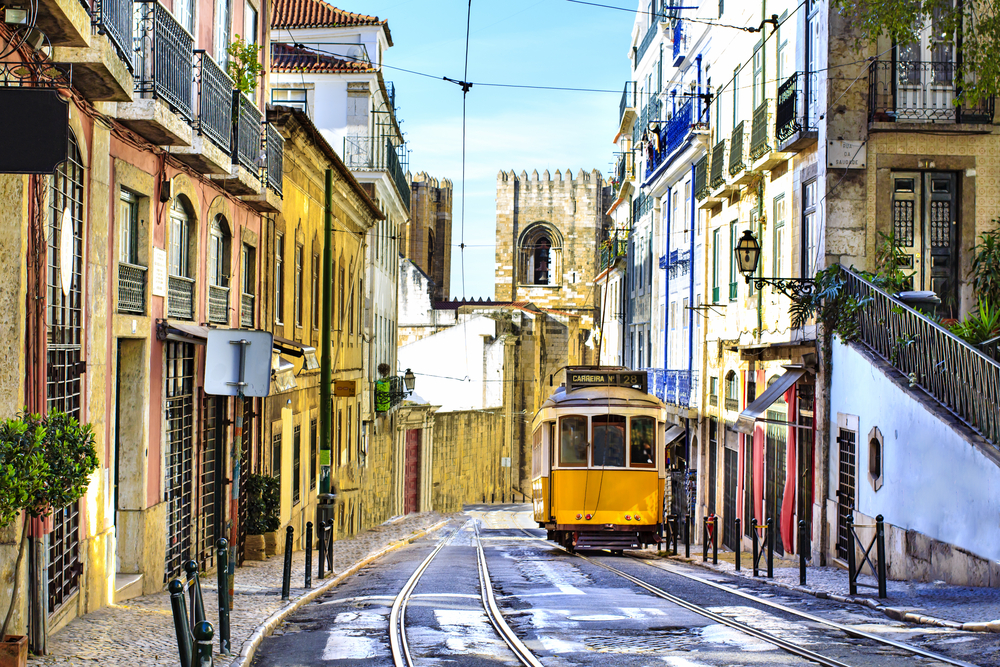
Loveable Lisbon is draped over seven hilltops on the edge of the Tagus estuary. It’s a patchwork of fun-filled neighborhoods that each have their own unique character and charm. For an alternative trip to Lisbon, start in the iconic Alfama, dodging street-side sardine grills and drooping washing lines as the alleys wiggle this way and that. Then, head to Bairro Alto to discover gritty music bars by vintage trams. Oh, and don’t miss Martim Moniz, where the smells of Rajput curries, ginger, and cumin all issue from the Indian cookhouses.
Lagos
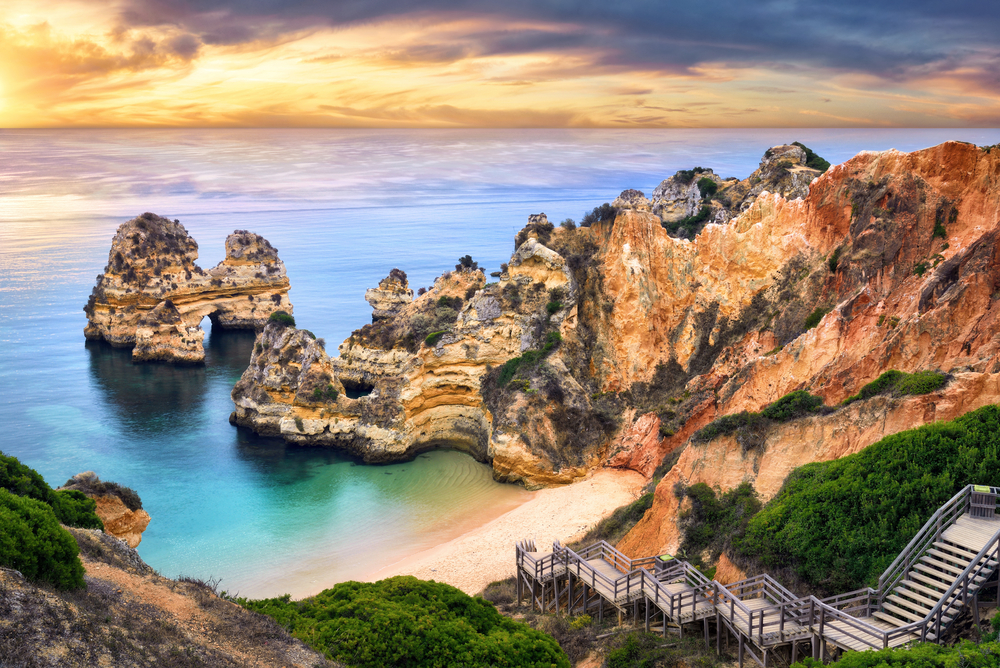
As the Interrail carriages shoot southwards to the region of the Algarve, you might just notice the thermometer crank up and the air get saltier. Welcome to the warmest, sunniest, most beach-ridden corner of Portugal. Lagos is the kingpin of the lot, with one foot on the south coast, and another on the wild Atlantic. Just to its west is where you’ll discover the roaring surf of Sagres on Praia do Tonel. Closer to the town itself is where you’ll catch the rock-ringed bays of Praia Dona Ana and Pinhao Beach – the stuff of travel brochures!
Tangier
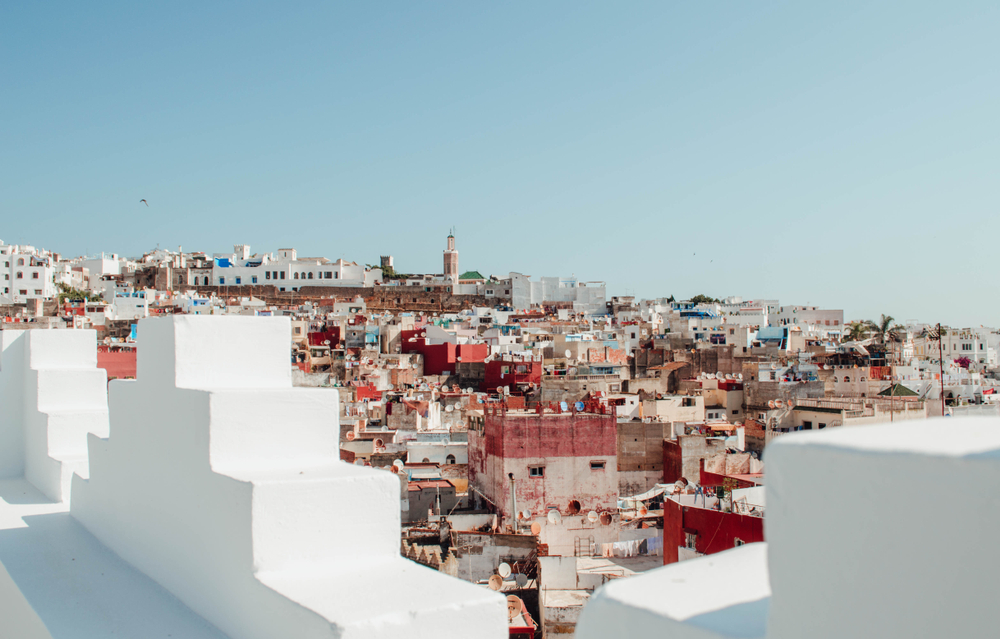
A speedy train back across the Portugal-Spain border can bring you to the port town of Algeciras, a major stepping stone from Europe to Africa. Wanderlust whetted? Good, because holders of Interrail passes get between 20% and 30% off the cost of a ride over the strait to Morocco. That means you could be sipping mint tea and munching cinnamon-infused tagine by nightfall. You’re likely to hit land in Tangier, where whitewashed walls and arabesque gateways surround a medina that bustles with souks and hawkers.